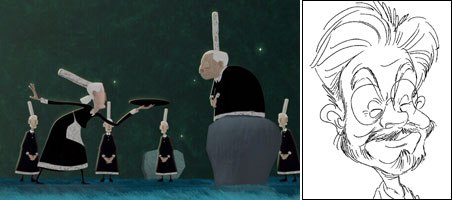Christopher Panzner looks into the increase of stunning student animated films from European schools and the factors contributing to why they are turning out often better than pro.
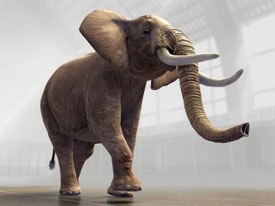
European animation schools are turning out such good student films these days that not only are many more winning international festivals; they are raising the bar for professionals worldwide.
Its no secret that shorts are an odd fit for broadcasters, who often either ignore the format or have little/no budget for one-offs or little/no place in their schedules. And there are fewer champions of the art form like Channel 4 (U.K.) in the 80s and 90s, although Nickelodeon, Cartoon Network and MTV have made and continue to make commendable efforts to keep the short alive in one form or another (i.e., shorts, music videos, commercials, station IDs, etc.) As a result, fewer professionals are dedicating the time, budget and resources to them, especially in Europe. Unlike U.S. studios, most European studios often dont have funding for R&D, a role the animation schools have traditionally filled. A model not unlike that for surprise! the high-technology sector.
But to say that these phenomena are the cause of this remarkable trend would be a disservice to the quality of the education in European animation schools and the talent coming out of Europe. And to a surprisingly practical and professional philosophy of education that contrasts with the image of the European artist as auteur, dilettante or enfant terrible.
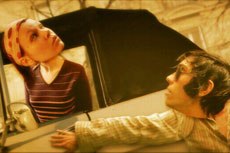
Gobelins, lécole de limage was one of the first schools in Europe to have an animation department (which celebrates its 30th anniversary this year). Gobelins is reputed to produce and reputed is used only to avoid insulting the other great animation schools some of the best animators in the world. Alumni can be found at Disney, DreamWorks, Pixar, Framestore, Electronic Arts, etc. and include, for example, Eric Bibo Bergeron, one of the directors of Shark Tale and The Road to Eldorado. There are approximately 600-1000 candidates for 25 spots every year.
Of paramount importance is strong drawing skill. The requirements are superb drawing and storytelling skills and there is a rigorous entrance exam. It built its reputation on strong character animation but emphasizes all of the disciplines: design, storyboard, layout, animation, editing, sound design everything it takes to make an animated film.
Gobelins is operated by are you ready for this? the Paris Chamber of Commerce and Industry (CCIP). Its mission, according to American Eric Riewer, head of the animation program there, is to enable young artists to become working professionals. In this, it is different from most other animation schools since its graduates must be able to integrate to a professional environment. The program is designed, Riewer explains, to give students technical mastery of the whole set of animation skills so that they can join professional studios and be immediately productive. Meaning, so they can be hired on graduation.
With the exception of the catastrophically bad years 2001, 2002 and 2003, when few studios were hiring after having laid off hundreds of employees, Gobelins has historically had a 100% success rate in job placement. And graduates normally have a variety of options and offers, though primarily animator jobs, depending on what jobs in what companies and countries are available at the time of graduation.
All of the students take the same courses. The now three-year program, just recently upped from its original two-year program as a result of the integration of 3D training, not only develops the students skill set and a diversity of styles and techniques through technical exercises such as character design, walk cycles and lip synching, but creativity as well, with a special emphasis on the creation of short films. Second-year students make short individual films and third year students a team film. Every year, in fact, the graduating class is responsible for the opening shorts of the Annecy International Film Festival.
Code Lyoko, a hit series in the U.S., grew out of a project for an Annecy film festival short. Very proud of their integration of 3D into what was an exclusively a 2D program not so long ago when Riewer joined in 1997, there wasnt a single computer in the animation department at SIGGRAPH this year, a Gobelins short, La Migration Bigoudenn, was one of three jury prize winners. Riewer credits this to the schools emphasis on, again, strong drawing skills and artistic personality the computer is just a tool. Still, its thrilling to see each new class arrive with increasing ease and familiarity with CGI Today at Gobelins, theres no longer any frontier between 2D and 3D.
While it considers itself in a class with CalArts in California, Ringling in Florida and Sheridan in Canada, the Gobelins Touch, adds Riewer, is not only to have strong artists with a strong skill set but to enhance the specificity of the French talent for expression so that talented people can not only get jobs but bring a whole lot more.
An expansion of the notion of the French Touch, which ex-pat Riewer explains, the French are immersed in a cultural and artistic environment that values artists they have a legitimate place in society. To succeed in the industry, however, he says they need not only very good skills, but a deep passion for animation and, perhaps, most importantly, tenacity. The vetting, global training and encouragement of talent to produce short films has resulted in the world-class reputation of the school and its students, who graduate each year ready to place the industry bar ever higher.
A Case Study: CUBE
CUBE Creative Computer Company in Paris was created in 2002 by former employees of world-famous animation/special effects house Ex Machina, Lionel Fages, Majid Loukil and Bruno Le Levier. Specializing in 2D and 3D animation for commercials, rides and large format films, the company has six full-time employees and between 12 and 35 freelancers depending on work in progress. One hundred percent of the freelance staff comes from animation schools, chosen on the strength of their short student films. Students are more and more competent each year, artistically and technically, explains managing director Lionel Fages. Its obvious that a great deal of time and effort has been dedicated by the animation schools to prepare them graphically and in the writing, the two elements which generally lead to the creation of a well-conceived, well-written and well-made film.
What I try and determine with these young talents, what Im looking for in a director, is someone with an eye, a vision, a sense of timing and rhythm and storytelling ability, Fages continued.
Current young talents include Louis Clichy of Les Gobelins, Nicolas Deveaux, Renaud Roullet, Alexandre Theil, Yann Couderc, Régis Saillard, Manuel Quinto, Nicolas Vion and Xavier Henry of Supinfocom Valenciennes, Frank Balson, Victor Moulin, Thomas Wagner and Bertrand Todesco of Supinfocom Arles, Cedric Hi of EESA (Orly) and Franklin Toussaint of Lisaa (Paris). While its true that there is an emphasis on turning out directors rather than technicians, this is not to the detriment of the technical aspects of a films creation... we are rarely disappointed by the technical skills of these young creators.
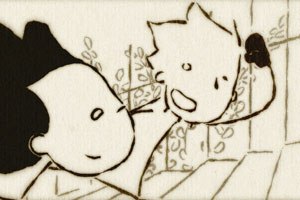
CUBEs position is a little unique in France in that it is both a production company and an animation studio. It can offer these young talents the possibility of working either as directors or simply as animators. Weve produced three shorts and a ride with people right out of school that have done really well in festivals around the world Louis Clichys ça sert à quoi lamour, Romain SegaudsBip-bip, Nicolas Deveauxs 7 tonnes 2 and Périls sur Akryls by Yann Couderc and Xavier Henry.
Thanks to the success of these films, CUBE was then able to go to advertising agencies, for example, and pitch these young talents, allowing them to get started very quickly on real careers as directors. This approach is fairly unique in Europe and in France and CUBEs notoriety in the schools has been established as a result, giving them an edge over brain-draining American studios. We gave an incredible opportunity to Yann Couderc and Xavier Henry, whose first professional film, Périls sur Akryls, inspired by their student film Akryls, came out in 70mm at (French amusement park) Futuroscope! How many directors in the world can say they did their first film in 70mm ?!!
CUBE normally makes two parallel propositions to new directors they are looking to bring onboard: to show their reel around in order to interest potential CUBE clients and to have these aspiring directors write a scenario for a short that CUBE will finance and produce. An example of the fallout from this philosophy is Nicolas Deveaux, whose remarkable short, 7 tonnes 2 (which can be seen in the New Talents area on the CUBE website) has garnered this young director, in his first year as a professional, three commercials and a video clip, Drop the Pressure by Mylo.
Two very original CGI shorts currently in production at CUBE are also likely to create a sensation: Cédric His New York, New York and Frank Balsons La Traque du Gnou. Our position where these young talents are concerned allows us to have a more dynamic vision of the future and to be more in phase with the times, says Fages.
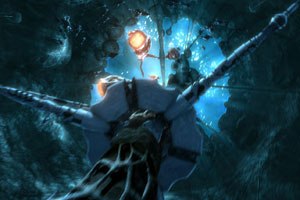
Short is Sweet
In short, European student shorts are getting more and more professional. Part of the reason is there is less motivation for professionals to make them, but a bigger part of the equation is that European animation schools are providing the tools, the time and the teachers to the talent to invent, experiment and produce innovative, high-quality shorts. The digital revolution has a little something to do with it, too, with professional software now off-the-shelf at affordable prices so its an even playing field, but that doesnt explain 2D. Were very concerned with providing a classical animation foundation the mindset is crucial, says Eric Riewer about the Gobelins approach to 2D and 3D.
In short, its possible that a confluence of trends is contributing to the success of European student films: cheaper and better software, a younger generation more at ease with technology, an auteur culture, broadcasters who wont finance shorts (nor professionals, as a result), a proliferation of festivals (and, therefore, more possibilities to win), a recognition of animation as a serious art form with more serious content, demanding schools with affordable tuition (currently US$2,200 a year at Gobelins!) that doesnt force graduates into debt or the industrial meat grinder on graduation, the Hollywood-ization of the globe and the speculation goes on and on.
But one thing is certain: in short, its cool.
As a student, Chris Panzner once accidentally went shopping with Jackie Onassis for paintings by soft porn S&M painter Richard Lindner. He recently created writing company Power Lines and production/distribution company Eye & Ear.
